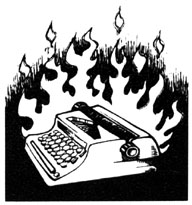In the first poem, Bonnefoy wrote about the security of the memory
of insecurity in our unsure world.
As a child, he fretted about this street whose name called up
thoughts of a future that seemed beyond time: “Meanwhile the flashing lights of the
street’s name promised that it truly was the passage.” “I wanted to go far, enter elsewhere, but the
paths must have turned in the shade of the boxwood and looped back to where they
began, for I soon found myself yet again at the point of departure.”
As an adult, he visited the street again: “Five years ago
when my mother was in the hospital beside the botanical garden, I returned to
the Rue Traversière two or three times in the early afternoon. All at once,
after so many years away, I rediscovered the almost forgotten childhood city
and this street which seemed to open onto another world.”
In the 'Second Rue Traversière,' someone who has read the first poem says that he also grew up near Rue Traversière. But, he insists, it was not near the
botanical garden at all, but ran by the archbishop’s palace in a wealthy neighborhood
of large houses far across town. Bonnefoy is adamant: “Big houses? No. It was a
very poor street.”
When he gets home, Bonnefoy pulls out the ancient map he has kept
all these years. “It still unfolds, the words and streets meet up, again the
dead language speaks at the crossings. And it’s true, Rue Traversière is in the
east, in the rich part of town. And over here, running out into the shapeless
suburbs, what is the name of that street I took again only six or seven years
ago, mulling over its importance in my life? … Where then is this street that I
know with my whole being, which is,
and what is it called? What is its real place in this network of places,
equally real, which seem however to exclude it?”
“I can write and write, but I am also the person who looks at
the map of the city of his childhood and doesn’t understand.”
This new Rue Traversière, he realizes, is “a whole world that
I owe to another child.”
We live in a world of others. And we know our world through
all the intimate others who may, in fact, lie within ourselves.
“Chance, of which we are born, chance precariously,
delicately, endlessly folded over us like the chrysalis’ wing; you can only
keep all of it in the colours of your ignorance as long as we are alone and as
if asleep, turned to the shadows. To the other—be it the writing, the wing’s
unfolding, every now and then—one owes the sense.”
*** according to French Wikipedia, there
is a Rue Traversière in Brussels. And in Nantes. And Paris, too. No matter. Bonnefoy’s twin Rue Traversières are stand-ins for all streets, all the streets he –
and I, and we – have crossed and will continue to cross.
Addendum, 4 Sept. 2017
A few days ago, perusing the Strand $2 carts, I found this, which I read decades ago, was moved by, and obviously put out of my mind:
Bruno Schulz's The Street of Crocodiles also features an evocative worn-out map held together by strips of linen. And in it, an exacting distortion of memory: "the Street of Crocodiles shone with the empty whiteness that usually marks polar regions or unexplored countries of which almost nothing is known."
Addendum, 4 Sept. 2017
A few days ago, perusing the Strand $2 carts, I found this, which I read decades ago, was moved by, and obviously put out of my mind:
Bruno Schulz's The Street of Crocodiles also features an evocative worn-out map held together by strips of linen. And in it, an exacting distortion of memory: "the Street of Crocodiles shone with the empty whiteness that usually marks polar regions or unexplored countries of which almost nothing is known."
As he walked his Street of the Cross Street, Bonnefoy, I see now, was in conversation with Schulz who, in writing about his Street of Crocodiles, put his thoughts this way:
Our language has no definitions which would weigh, so to speak, the grade of reality, or define its suppleness. Let us say it bluntly : the misfortune of that area is that nothing ever succeeds there, nothing can ever reach a definite conclusion. Gestures hang in the air, movements are prematurely exhausted and cannot overcome a certain point of inertia. We have already noticed the great bravura and prodigality in intentions, projects and anticipations which are one of the characteristics of the district. It is in fact no more than a fermentation of desires, prematurely aroused and therefore impotent and empty. ... In that city of cheap human material, no instincts can flourish, no dark and unusual passions can be aroused. The Street of Crocodiles was a concession of our city to modernity and metropolitan corruption. Obviously, we were unable to afford anything better than a paper imitation, a montage of illustrations cut out from last year's mouldering newspapers.





